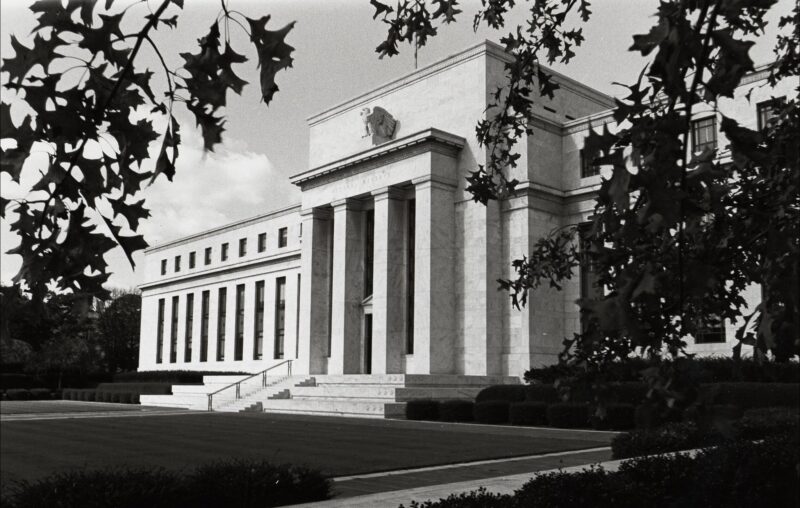Faster Growth and Interest Rates: Even Harder than You Think

Writing in the Wall Street Journal, Mickey Levy opines that a stronger economy, fueled by productivity growth, might cause problems for the Federal Reserve. Levy, who is a member of the Shadow Open Market Committee, identifies the central bank’s difficult task: “adjust[ing] monetary policy to reflect the higher real interest rates that naturally accompany higher expected rates of return on capital.”
The Fed’s main policy instrument is the interest it pays banks on reserves. Conventionally, raising rates makes money tighter and lowering rates makes money looser. But beyond the short run, things get harder.
The relationship between monetary policy and interest rates is complex. Rates indeed fall if the Fed unexpectedly loosens. But if looser money raises market participants’ inflation expectations, then nominal (current-dollar) interest rates will eventually rise. Hence, higher rates could be a sign of loose money, not tight, depending on how far from the policy change we’re looking and how fast the market adapts.
Things get more complicated still when we consider the effects of economic growth. “Higher expected rates of return on capital have lifted real [inflation-adjusted] interest rates,” Levy argues. There’s a strong theoretical argument for this effect. Faster growth means higher lifetime income. Consumers would want to borrow against that larger future income to transfer some of that consumption from tomorrow to today, and businesses would want to do the same for investment purposes. The demand for capital rises, and real interest rates rise, too.
But the Fed ultimately affects nominal rates. Real rates usually reflect structural economic factors; the effects of monetary policy are short-lived. We know from the Fisher equation that the nominal interest rate equals the real interest rate minus expected inflation. Mathematically, economists write this as i = r + E(π). Granted faster growth raises real rates (r), but by how much? We don’t know how sensitive real interest rates are to economic growth. There’s no reason to suppose, for example, that one-percentage-point-faster growth causes real rates to rise by one percentage point, and there’s certainly no reason to expect any measured effect to remain constant across the yield curve. Economists can and do develop and calibrate models to estimate this effect, but the same criticisms Levy levels against the Fed’s estimate of the natural rate of interest — ”the natural real rate is unobservable, and estimates of it are iffy” — apply here, too.
Furthermore, what happens to inflation expectations (E(π))? In general, one percentage point faster growth lowers inflation by one percentage point. The nominal interest rate should fall one-for-one with economic growth, all else being equal. Now we have a case of ambiguous effects: the uncertain higher-real-rate effect against the one-for-one expected-inflation effect. Intuitively, real rates probably rise less than one-for-one when growth accelerates. But even if we know the direction of the effect, we still have a problem of magnitude. If the Fed gets it wrong, it could inadvertently create capital misallocations and suboptimal economic performance.
One more complication: the market’s expectations of inflation are rising, not falling, suggesting that the Fed might not have a grip on overall demand (total nominal spending) after all. Since February 1, the 5-year TIPS spread, which measures the breakeven inflation rate, has risen from 2.17 percent to 2.40 percent. The 10-year TIPS spread has risen from 2.19 percent to 2.32 percent. Finally, David Beckworth’s estimate of the NGDP gap, which measures how far actual nominal spending is from its neutral level (“the level at which NGDP is neither expansionary nor contractionary”), is up to 6.16 percent, trending upward over the past several quarters.
Levy concludes that the Fed “needs to gain a better understanding of the supply side of the economy and how current innovations are affecting it, rather than focusing primarily on how monetary policy affects demand management.” It’s certainly good for policymakers to have better models, higher-quality data, and more accurate forecasts. But even so, the right policy actions remain ambiguous. Given the data in the previous paragraph, it’s by no means certain that the Fed should pay less attention to aggregate demand management — and since I’ve frequently claimed monetary policy is too tight, that’s not easy for me to admit.
The real takeaway from Levy’s article is that discretionary policy is inherently fraught with uncertainty and danger. Perhaps “the Fed needs to push back on calls to lower rates.” Perhaps not. I’ll be watching future Fed policy anxiously. All we can do is give the best advice we can at the time — and given how fast circumstances change, we’ll inevitably mess it up if we continue to rely on central bankers’ private judgments.









